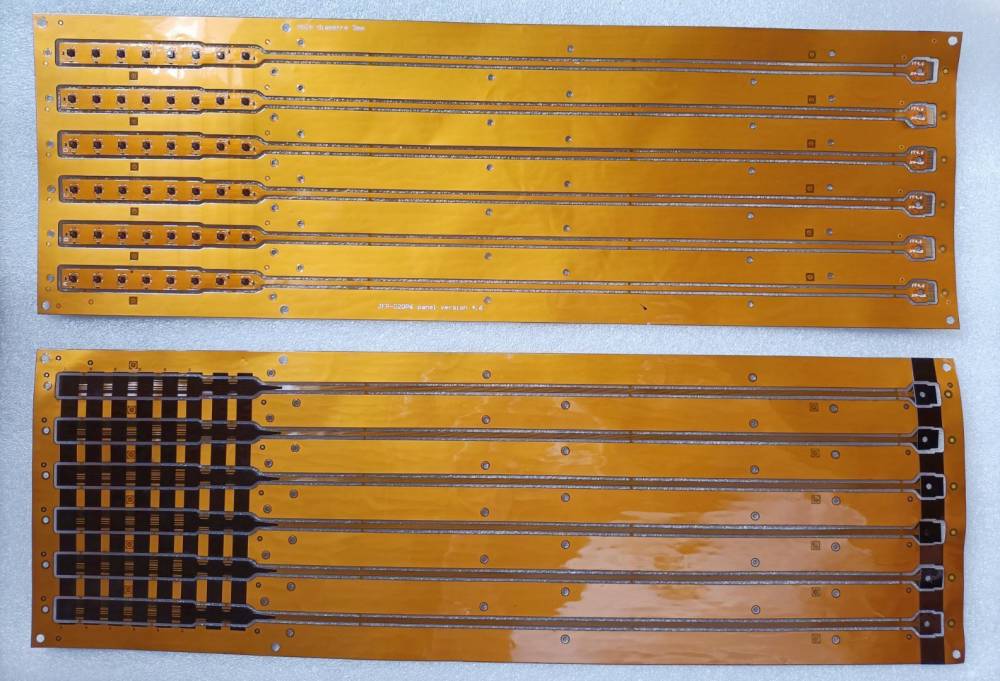- Flex PCB Blog
- PCB Assembly Blog
- How to solve the problem of PCB warping deformation after welding large copper bar?
- About PCB Assembly
- QFP and BGA and the Development Trend in PCB assembly
- Why some components need be baked before reflow soldering
- About Flex PCB Assembly
- Manual Soldering in SMT Assembly Manufacturing Process
- BGA Components and BGA Assembly
- Quick Understanding for PCB Assembly Process
- About SMT Assembly (Surface Mount Technology)
- About THT Assembly (Through-Hole Technology)
- About Reflow Soldering
- About_Wave_Soldering
- PCB Assembly Inspections and Tests
- Panel Requirements for PCB Assembly
- About SMT (Surface Mount Technology)
- FPC Research Blog

The assembly of flexible PCB is basically similar as the rigid-PCB assembly, and the important thing is to fix the boards well when do the assembly. And in actual manufacturing process, the operator will take different processes according to the different requirements of the process.
Characteristics of Flex-PCB Assembly
Flex-PCB Attached to Rigid-PCB or fixture:
Flexible PCB is easy to be deformed due to its light and thin characteristics, so it cannot be assembled directly on the SMT production line like rigid PCB. That is to say, in order to assemble flexible PCB, the flexible PCB must be fixed on the substrate of rigid PCB or professional fixture, so that it can be disguised as rigid PCB for assembly. The flatness, positioning accuracy and consistency of the substrate are the key factors to achieve product quality control, and also the key points of flexible PCB assembly.
Low density:
At present, the price of flexible PCB is relatively higher than that of rigid PCB. From the perspective of product cost, most flexible PCBs are only used for the connection between different functional modules. The number of components to be assembled on flexible PCBs is small and the distribution density is low, generally less than 50 components or even two connectors.
Panel:
Flexible PCB is mainly used in mobile phones, digital cameras and other light, small, thin electronic products. The area of its single-side flex-PCB is not large, what’s more, the number of single-side flex-PCB components is small, so in order to improve the assembly efficiency, most factories will choose to use panels. After assembly, these flex-PCBs which have different functions will be separated by hand or by v-cutting or v-scoring.
High Requirements of Product Quality:
Due to the frequent application of flexible PCB in such environment that requires repeated bending and precision control, the components assembled on it must be able to meet the requirements of its operating environment, so the quality requirements of flexible PCB in assembly such as cleanliness, anti-static measures and reliability of soldering are generally much higher than the general rigid PCB. Besides, at present, with the implementation of lead-free technology, the challenges of flexible circuit board assembly are increasing.
High Assembly Cost:
Compared with rigid PCB assembly, flexible PCB assembly has a lot of characteristics, such as more investment in specific fixture, long production cycle, relatively lower equipment utilization rate, more accessories and operators, higher requirements of production environment and product quality. This makes the total cost of flexible PCB assembly is high, especially the initial investment cost is higher.
Conclusion:
With the development of electronic products, the use of flexible PCB is expanding, and the assembly process of flexible PCB will be improved. The manufacturing and assembly costs will continue to reduce, which will promote the further expansion of the use of flexible PCB, so that the application of flexible PCB into a virtuous cycle.



